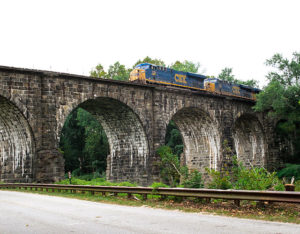Summer heat takes toll on railroad tracks
Written by jroodMore than roads are buckling under the extreme heat. Iowa's railroad tracks also are susceptible to the high temperatures, and this is keeping railroad crews and Iowa Department of Transportation track inspectors busy, the Waterloo Cedar Falls Courier reports.
For decades, researchers
have tried to figure out how to keep steel railroad tracks from warping in high
temperatures, according to an IDOT news release. Despite the successful
prevention measures adopted by the railroad industry, no technology exists that
can completely prevent it from happening.
The buckling happens to
welded rails, rails that do not have joints. Rails come from the welding plants
in one-quarter mile long strings. Once the rails are laid in the track, the
ends are welded to each other to create strings of rail that are continuous.
The United States began using a welded rail system instead of jointed in the
1950s because they provide a smoother ride, eliminate the
"clickety-clack" of traditional rails and reduce maintenance costs.
Steel rails slowly expand
and contract as temperatures rise and fall. An 1,800-foot length of rail will
expand almost a foot with an 80-degree change in temperature. Before welded
rail, expansion was absorbed by a small gap (joint) between the rails. With
welded rail the normal tendency to expand must be constrained internally by
securing the rail.
Careful engineering
measures, including heating the rail, are taken when rail is installed to
account for rail expansion and contraction. Collectively, the railroad spikes,
tie plates, cross ties, rock ballast, and rail anchors (applied in a strict
pattern to contain the rail from movement) can normally contain these stresses.
However, in some cases these measures cannot hold the extreme amount of force
that high temperatures can create. A sudden release of these stresses may
occur, resulting in the rapid (and often audible) development of a kink or sideways
movement in the track.
That is where the heat
inspectors come in. To add an extra measure of safety, track inspectors are
sent out when the temperature rises quickly from night to day or when the
daytime temperatures become extreme and the rail attempts to rapidly expand.
These inspectors look for signs the track is under extreme compression and in
danger of kinking. Signs include wrinkles in the track and disturbances of the
ballast. When a kink or high tension is discovered in the track, the track is
taken out of service, repaired and then returned to service.
If warranted, a heat
restriction order may be imposed by the railroads as an additional safety
measure. During these restrictions, trains must operate more slowly through the
affected areas.





